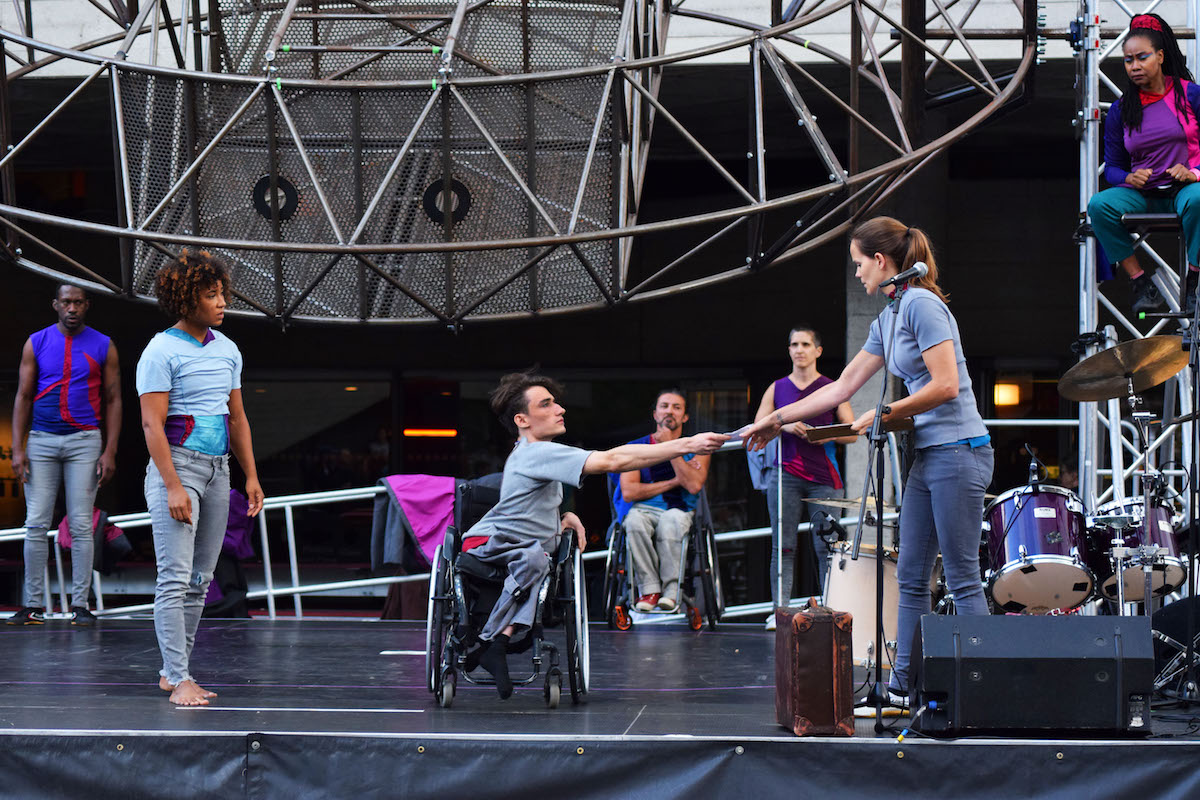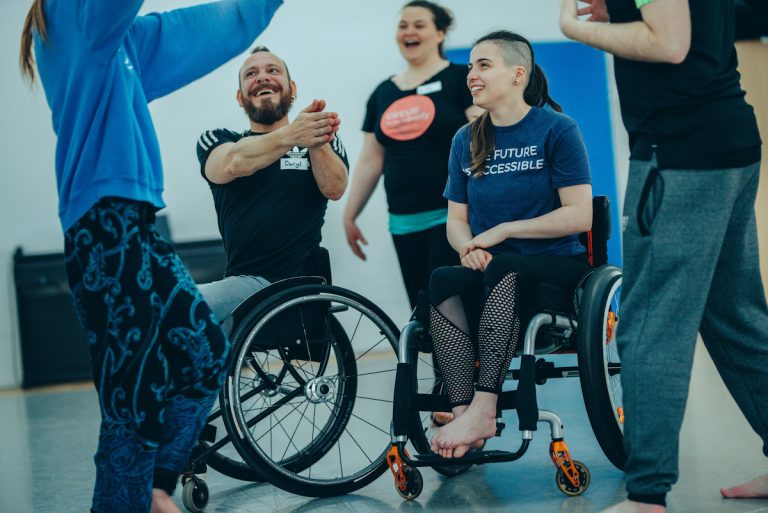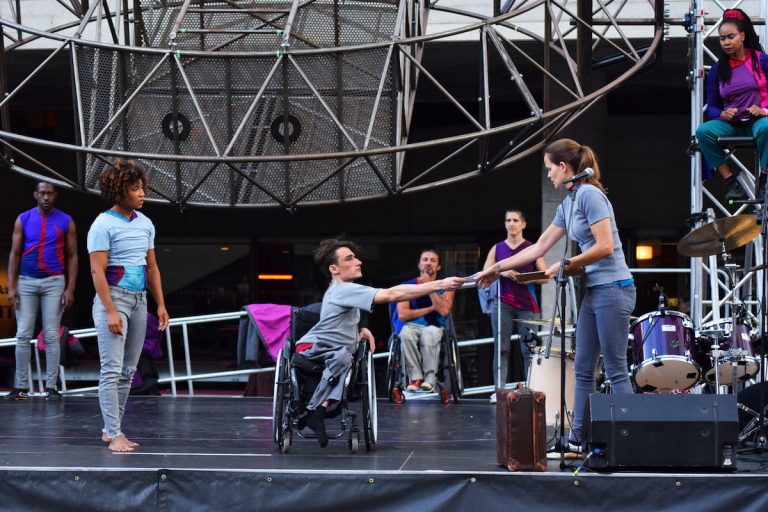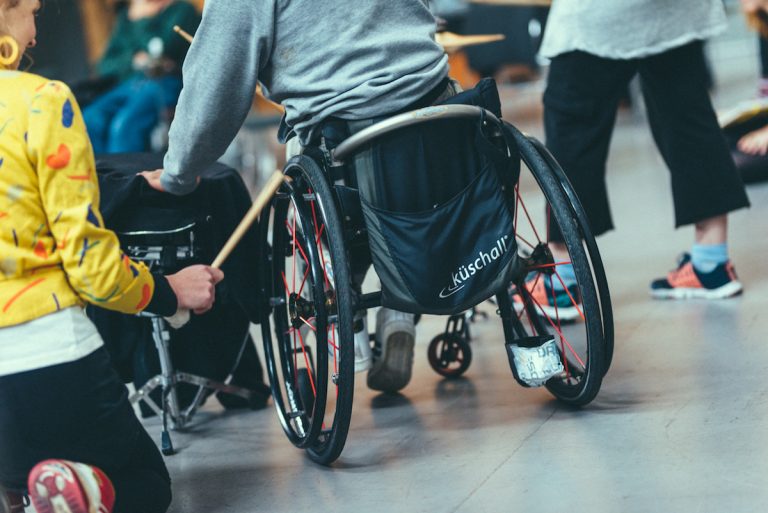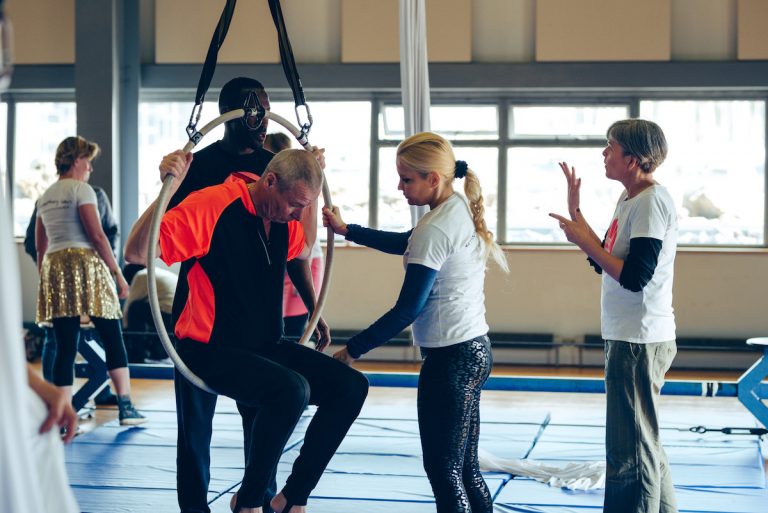Inclusive circus is a relatively new field of practice. There is still learning, sharing and responding to be done together, exploring how to encourage growth and awareness in the field. Having the confidence to embrace ‘not knowing’ and to experiment with doing things differently is where the future of circus gets exciting.
No one has all the answers and there are no hard-and-fast rules, but as a starting point here are some important principles to consider:
-
Be open to learning
In the inclusive circus setting, the trainer is often learning as much as the participant. D/deaf and disabled people live every day navigating barriers and are therefore experts when it comes to their mind and body. Continual learning from participants requires a willingness to be open to their expertise, responding to suggested solutions, and reflecting on successes as well as challenges. Consider adjusting priorities and learning outcomes as unconventional support and extended time frames can make all the difference between someone participating or not.
-
Extend the ‘rebellious heart’ of circus
If the notion that there is a ‘right’ and a ‘wrong’ circus technique, body or move, is believed then not only are participants put at a disadvantage, but the essential character of circus becomes stifled. D/deaf and disabled artists are taking circus in new directions and continue to make the art form the benchmark for innovative integrated practice. If creativity, originality and innovation are at the centre of how success is measured, circus will continue to challenge and be at the forefront of radical arts practice.
-
Be flexible and adaptable
Having only one way to do something is restrictive: for example, a pointed toe may be considered ‘good technique’ but it’s limiting for some people. Work to empower participants to find solutions together, by offering a range of ideas and possibilities. Avoid being precious about the art form and, rather than saying ‘That’s not the correct technique’, think ‘Why not?’ Encouraging openness, being flexible and not being afraid to ask questions are all important qualities for a prosperous and dynamic teaching and learning environment.
-
Embed diversity and inclusion in every strand of work
Environment, language, websites and people all signal an attitude towards diversity and inclusion. Diversity should be included as a value throughout all offerings so that it is represented everywhere and clear in the mission. Employ D/deaf and disabled trainers. Be explicit about difference and diversity: acknowledge diversity in the room. Make communications, marketing language, images, copy, formats and so on – accessible and representative. Work should be at its best when D/deaf, disabled and non-disabled people collaborate together so that segregation dissolves and the ‘them’ and ‘us’ of diversity is broken down.
-
Extend practice through partnerships
Find colleagues to share successes and challenges with. Look for new partners who can help encourage thinking differently and increase confidence. Being comfortable talking about difference will help to embrace it. Partners both within and beyond the sector can help by providing support to move forward more quickly.

